Why The Mikado is Still Problematic
Cultural Appropriation 101
In response to the protest and aftermath of the New York Gilbert & Sullivan Players’ now canceled production of The Mikado, this series addresses the racist performance and casting practices of Yellowface in the American Theatre. This series was curated by Jacqueline E. Lawton for HowlRound.
I don’t have the answer for what to do with The Mikado. I’ve never seen it live. I’ve only seen production photos, YouTube clips, and listened to recordings. I believe in an artist’s right to make the work that they want. But I also believe in making informed and thorough choices at a time when reckless racism is rampant in this country.
I also believe in retiring nostalgic cultural relics to the annals of history (like the Confederate Flag).
Maybe there aren’t enough triggers out there for people to understand why there’s so much anger and outrage from the Asian American and Pacific Islander community around The Mikado, because the response-at-large from Gilbert and Sullivan defenders has been that we just need to “lighten up.” So I’m hoping to help by giving some context and showing some pictures. This article may feel like Cultural Appropriation 101 for a lot of my colleagues, but I think it’s important to go back to basics.
White people have been making and profiting off stories about the ethnic experience for a long time while creating real life policies that actively exclude them from the social fabric of this country.
The truth is, no one can make anyone do anything. As long as there’s a privileged person who feels immune and entitled to produce The Mikado or any other kind of work that marginalizes others, those works will live on until the social climate changes.
For the record, I don’t think that hiring Asian people makes The Mikado OK. In my opinion, the show was born out of a fetishistic impulse that reduces the Japanese culture to an object of curiosity, and I don’t think that can be validated or corrected by “appropriate casting” without serious reconstructive dramaturgy.
Let’s begin.
In 1885, entrepreneur Tannaker Buhicrosan (who was said to be born of a Dutch father and a Japanese mother, and whose wife was Japanese) helped create a manufactured village in Knightsbridge, London, to “exhibit Japanese people and their amusements, among which may be mentioned theatrical shows and wrestling matches.” (New York Times, 1885).
These Japanese men and women were on display for two years. Like a theme park. Or maybe a zoo. It’s hard to tell because I couldn’t find any accounts from the Japanese participants, only the English visitors, who undoubtedly found it pleasant and delightful. Around the same time, W.S. Gilbert had already started The Mikado, and attended this exhibit as part of his research. These two major events were part of the growing interest in Eastern cultures from Victorian England.
Six months after the musical performed in London, The Mikado came to New York in 1885. During the late 19th century, this was some of the ongoing sentiment towards Asians—the Chinese in particular—in America.
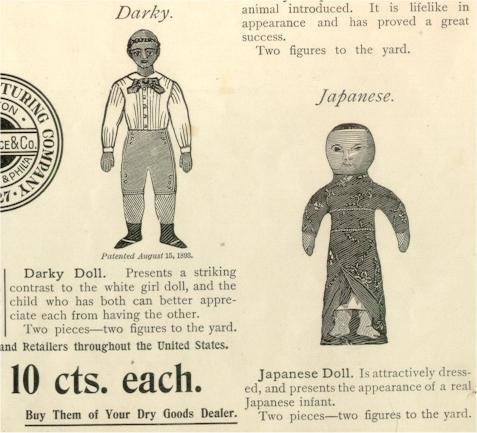
Company.
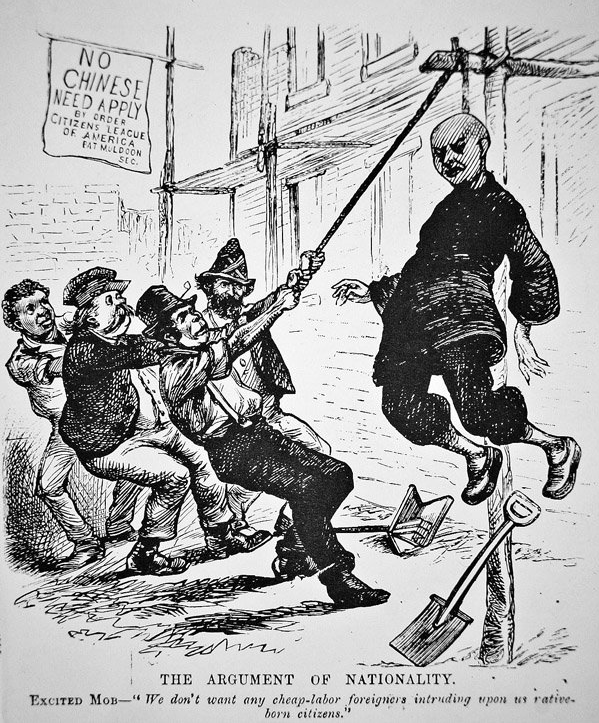

But even with all this rampant racism, The Mikado seemed to still be pretty successful—it ran for two hundred and fifty shows in New York, and had five company national tours. Apparently it’s possible to detest a demographic of people and still fetishize them for profit.
America has a problematic history of Hollywood and the Arts & Entertainment industry making money and doing this:

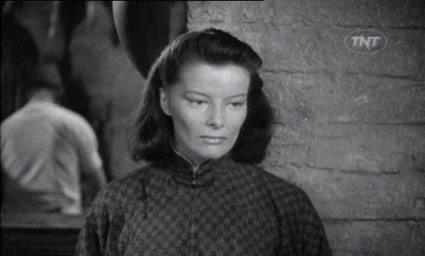
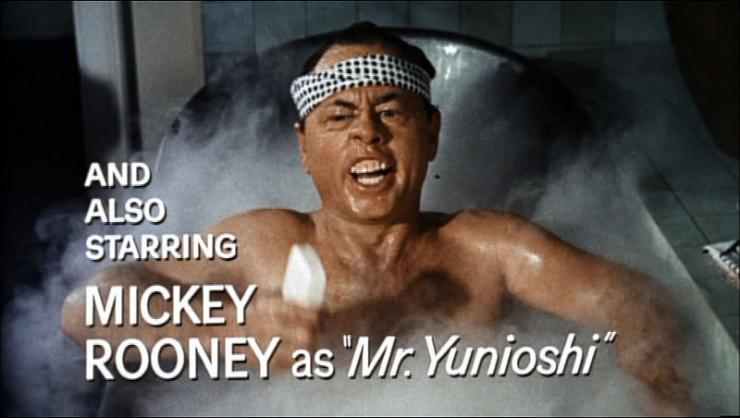
…while historically treating actual Japanese (and other Asian) Americans like this (yes, even Dr. Seuss):
Cultural appropriation in the 21st century looks something like this:
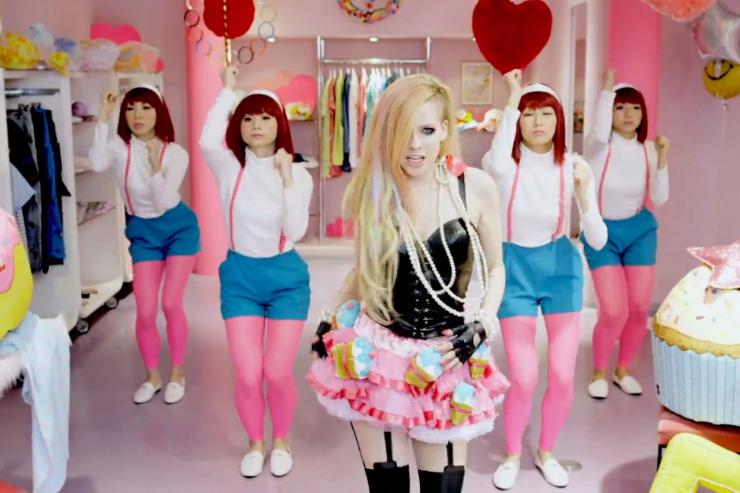
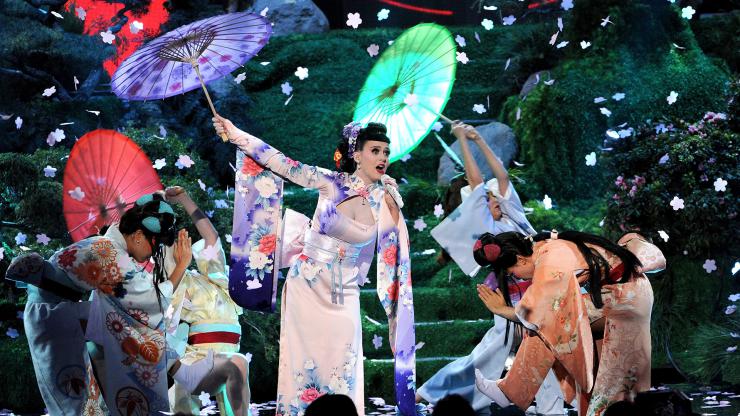

Which sucks because stuff like this is still happening:
Yes. It is indeed possible to detest a demographic of people and still fetishize them for profit.
I know that companies like NYGASP want to honor Gilbert and Sullivan and The Mikado, because in their minds, they think it’s this:
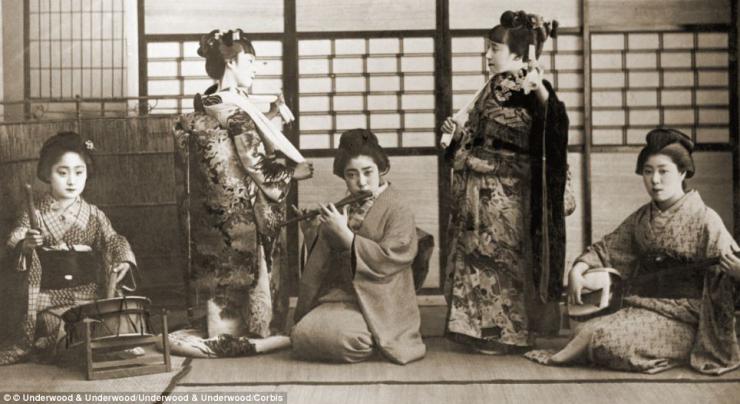
But, what they can’t help making is this:
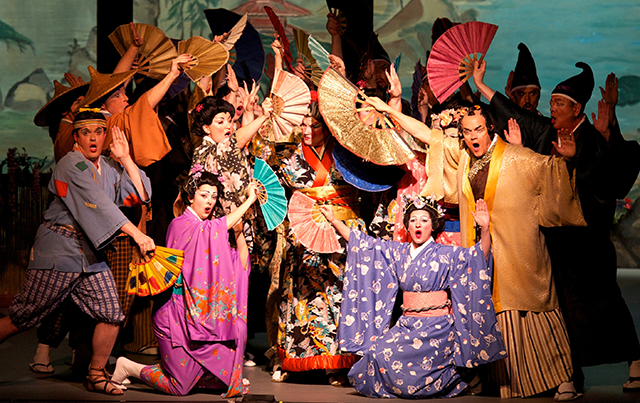
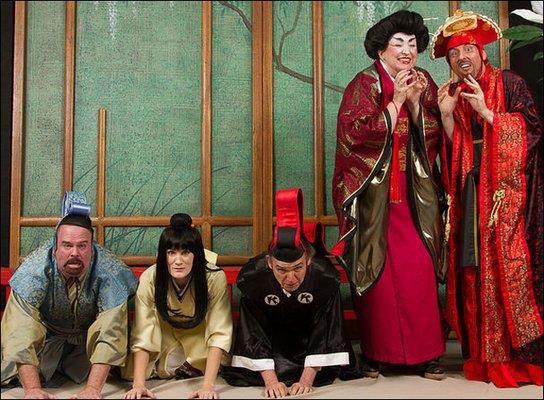
Because even though it’s “just a joke,” white America is still doing this:
For those who argue that “it’s just a play” and that the APA community should “get over it,” I want to offer this excerpt from Lindy West’s article on hipster racism:
Here's the thing about jokes. They only work when they're aiming up… People in positions of power simply cannot make jokes at the expense of the powerless. That's why, at a company party, you never have a roast where the CEO is roasting the janitor ("Isn't it funny how Steve can barely feed his family? This guy knows what I'm talking about!" [points to other janitor]).
It’s why no one seems to have a problem with this show:
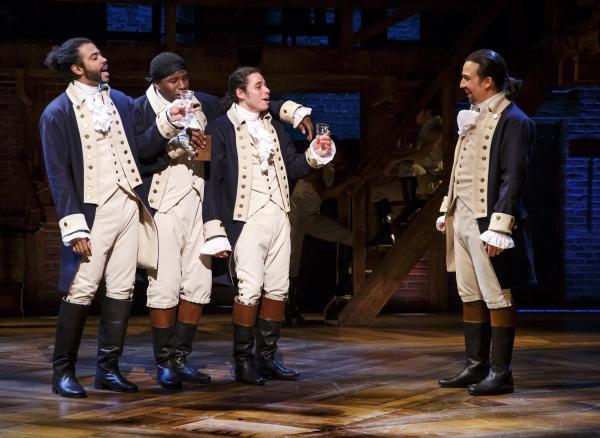
Why isn’t Hamilton an example of cultural appropriation? Alexander Hamilton wasn’t Puerto Rican. Thomas Jefferson wasn’t black. They certainly didn’t rap. Doesn’t this show have people of color hijacking the white American narrative?
Not really. Because at the end of the day, even though on stage we see this guy:

…no one will ever question the reputation and accuracy of this guy:
There’s an overwhelming amount of visible history on his side, so he’s pretty safe. High school kids across the country will still learn about him and all the great stuff he did.
It matters who has the power to make the story—notice I said “make,” not “tell.” It matters whose story is being made. White people have been making and profiting off stories about the ethnic experience for a long time while creating real life policies that actively exclude them from the social fabric of this country. Having those minorities parrot those stories back does not authenticate them. Black people doing blackface does not make blackface ideologically OK. Asians doing The Mikado does not make The Mikado ideologically OK.
Even though I would never do The Mikado, I’m not saying you can’t do it. I’m just saying you need to know what you’re doing when you’re doing it. Idle curiosity can be destructive in the hands of empowered people. Each person has a different degree of social ability—some are far more influential than others—so please consider use your agency and influence when you make your work.
The Mikado is not OK, but Hamilton is. Doing The Mikado will do a lot of hurt to the perception of an entire culture of people because in real life, they’ve been historically denied social agency. Alexander Hamilton, on the other hand, will probably be on the ten-dollar bill for a long, long time.

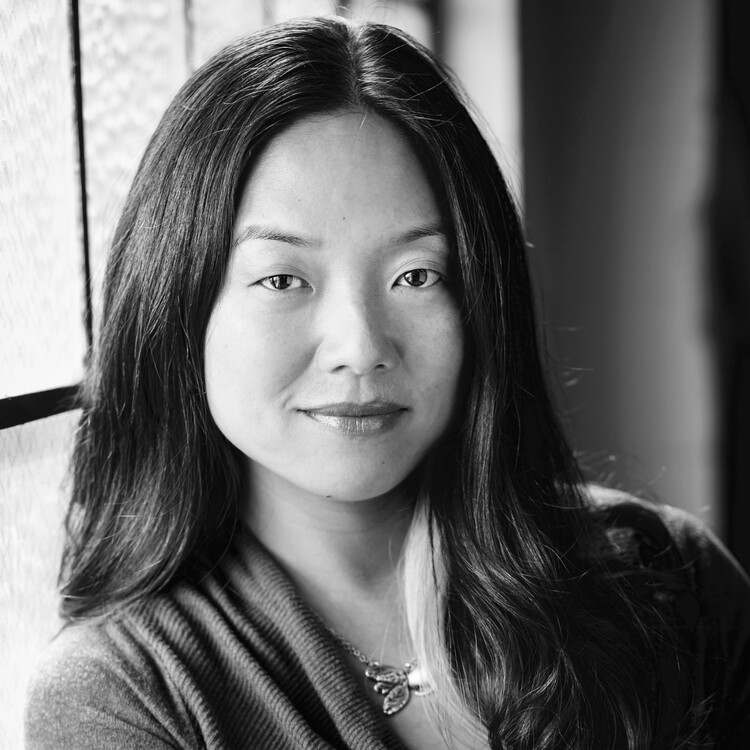


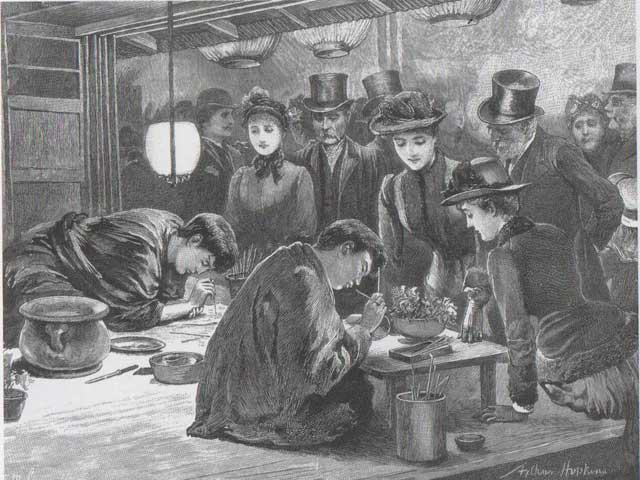
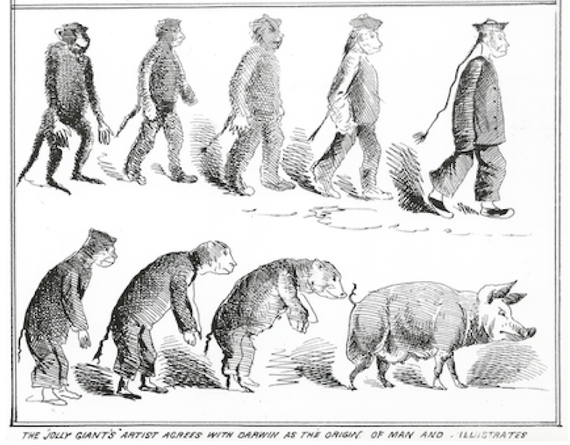
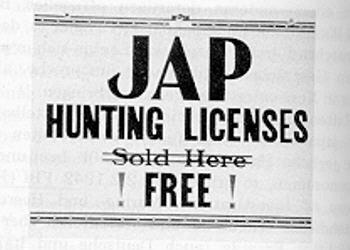
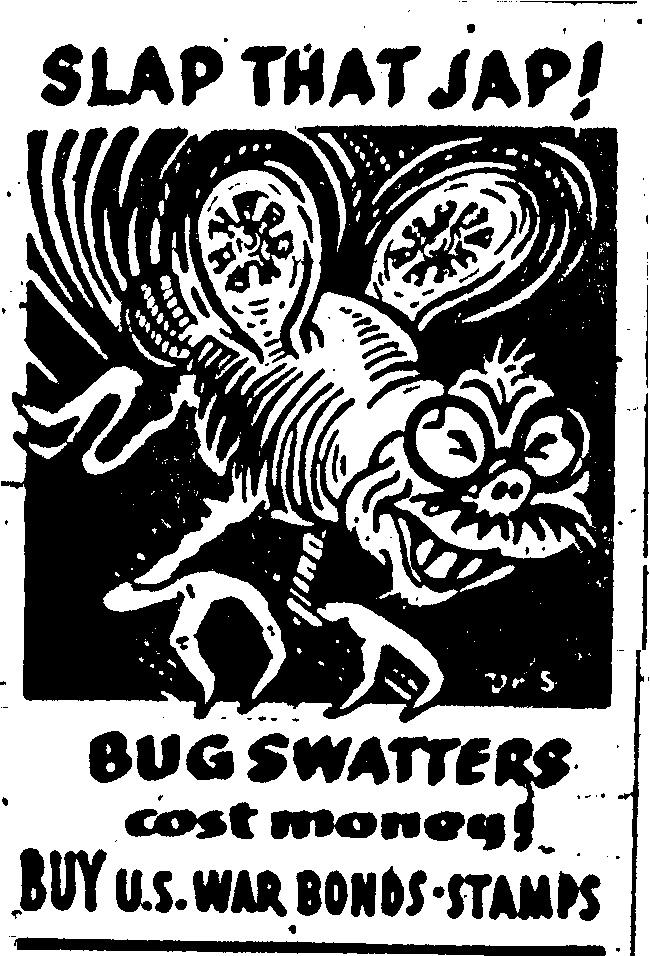
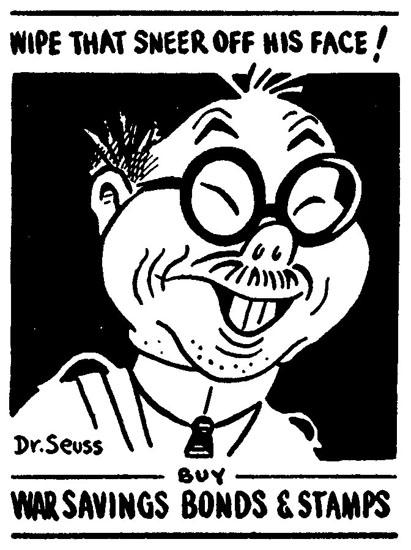
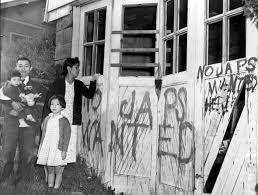
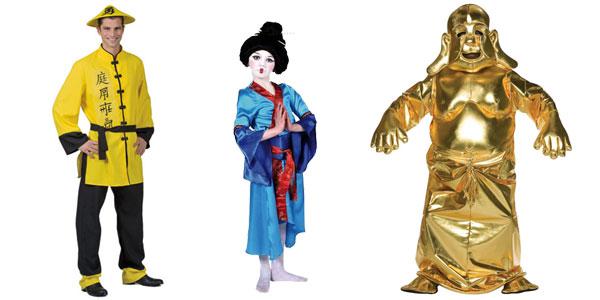



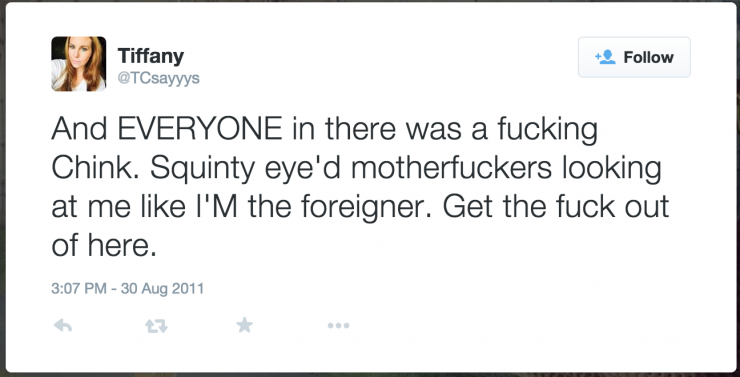


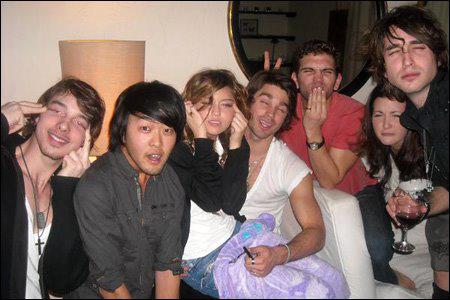
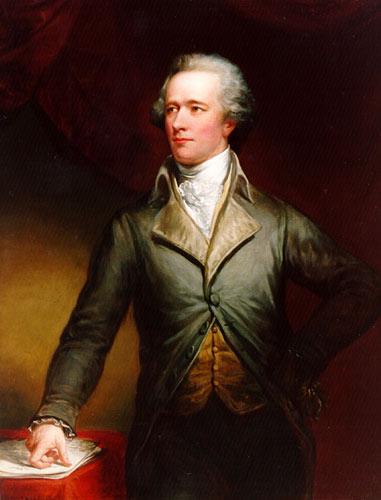

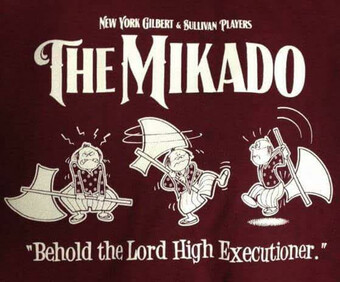


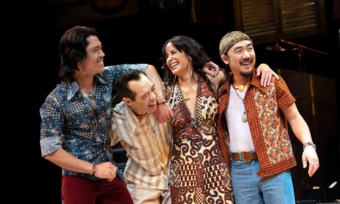

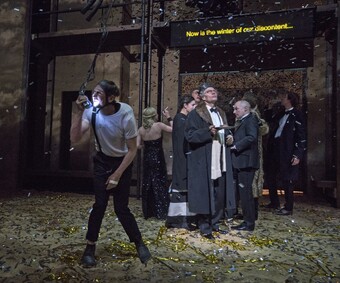

Comments
The article is just the start of the conversation—we want to know what you think about this subject, too! HowlRound is a space for knowledge-sharing, and we welcome spirited, thoughtful, and on-topic dialogue. Find our full comments policy here
I dearly love the Mikado just the way it is, but most of my defenses for it have already been made here, and apparently have fallen on deaf ears. there’s no possible answer to the statement “this makes me feel bad.“ So it seems kind of pointless to pretend it is possible to argue about this. Ms. Chiang says it okay for us to like it, even those she doesn’t and why can’t we agree to disagree. But the fact of the matter is people who feel the way she does have aggressively gone against productions of the Mikado and caused them to be canceled. Not in the metaphorical way the people use the word now, but literally as in the actors didn’t show up, and no performance occurred. If you don’t wanna see the show, or you want to put up disparaging blogs about it, that’s your right. But when you’re actively trying to shut the show down, and succeed, you have no right to say “you’re free to see the show if you want.“ That just isn’t true.
I think anyone who honestly watches this operetta and thinks it is racist does not understand what it is about. Firstly, the jibes are directed at the British government / aristocracy of the day and Secondly, any Japanese allusions are respectful and culturally benign. It is clear that no disrespect is intended towards the Japanese people although it obviously does cash in on the British fasciation with the Japanese culture of the time. The music and artistry of this piece is beyond any attempt to cancel it. It's like cancelling the Mona Lisa because she happens to be white.
This is a slippery slope, dear readers. Once you put Mikado on your little list of things that won't be missed, you can't just stop there. Madama Butterfly... yellow face and that depiction of the American as villain. Turandot... yellow face. Aida... black face. Porgy and Bess, the greatest of all American opera... racist sterotyped depictions. Now we can start on musical theatre.... South Pacific.. racist depiction of native islander Bloody Mary, who pushes her very underage daughter off on a pilot who then sings"Younger than Springtime." Despite the fact that the show is about the evils of racism! The King and I... yellow face. So, folks... all of these plus the others I failed to include, and thousands of movies made before our enlightened age, must must follow Mikado into the cannibal's pot. Enjoy the world you're making.
The Mikado is not actually about Japan at all. Gilbert and Sullivan wrote as a covert satire of British politics of their day. I can see where Asian Americans would have an ambivalent relationship with the play.
However, I think the history of the Mikado is actually rather complex. When Prince Sadanaru of Japan visited England in 1907, he was keen to see the comic opera. He was disappointed to learn it had been closed during his visit out of fears it would offend them.
The Mikado had also been performed in Tokoyo without offending Japanese audiences. I was curious if you feel the play performed in Japan has a different context because the Japanese are by far the majority.
It reminds me of a recent magazine shoot where a white model was criticized for wearing a kimono. The Japanese public had a different reaction, and I was wondering if it is because they may not understand the point of view of Asians in this country.
I personally feel cultural appropriation is a problematic concept. The definition can be subjective and used as a kind of rhetorical club.
It is enough to call out what is racism without arguing about what cultural appropriation is or is not. That said, I respect how you construct your argument.
This article was written 18 months ago. I am still receiving disqus notifications of new comments. This is true of other articles about yellowface, though, interestingly, not of other theater-related posts I've commented upon. The majority of new comments on these old posts are from defenders of yellowface.
I take from this that there are a number of passionate defenders of yellowface in the theater community.
I'd like to share a more controversial point, grounded in my observations from a couple of years of debating this issue.
I've been disappointed to see how few defenders of yellowface seem to truely consider the points of the authors of the posts, all of whom are Asian American. Worse, I've been unsettled to see some inaccurate assumptions about the authors in many of these comments: people assume the authors are irrational, emotional, uncultured, unintelligent, petty, childish. Not all of these comments, of course, but too many to be mere coincidence. Some of these comments have been deleted for violating commenting guidelines.
It seems to me that many of the champions of yellowface performance harbor negative stereotypes about Asian people, either conscious or unconscious, and those stereotypes shape their perceptions and judgement. This is what research in cognitive science would teach us to predict of course: repeated exposure to negative stereotypes is likely to create unconscious biases. These biases then shape perception and interpretation of the world around us. These comments are proof of the harm done by yellowface performance.
It will be tempting to reject this comment out of hand, without considering it. I implore you to have the bravery to think about this point. To investigate the ocean of research proving the reality and pervasiveness of unconscious bias. To perform a rigorous self-inventory.
Science tells us that all of us harbor unconscious biases. Some of them are benign (a bias against old yogurt as likely to make you sick, for example!), but some are quite harmful. It's all of our jobs to become aware of our own biases, to test them against reality, and to counteract any that may lead to discriminatory judgments and actions by overruling them with our conscious minds.
You are including The Mikado with "yellowface" and I disagree. Perhaps this statement, "repeated exposure to negative stereotypes is likely to create unconscious biases" applies to your view of the operetta. My defense is only of The Mikado, not of yellowface, so don't put words in people's mouths please.
The play was written to be performed in a way that led the audience to believe that it was set in Japan. It is full of signifiers taken from a kind of bastardized Japanese culture. If you have read other comments on this and other posts, you know that many passionate defenders of the piece believe that it is the result of loving research into Japanese culture.
To claim that this piece will not further entrench negative stereotypes about Japanese people because it was intended as a satire of British society, when it simultaneously presents familiar stereotypes of Japanese people is, I think, not based on the reality of how audiences receive and interpret plays. Especially as those stereotypes are still deployed in contemporary American culture, were omnipresent just a generation ago, and the subject of G&S' satire is a far more distant memory.
I totally understand where you're coming from. On some of the details we don't agree. I don't think that using Japanese art and costume is automatically a "negative stereotype." The alternative, which you seem to suggest, is only portrayals in art of cultural settings identical to your own. I think great care has to be taken in presentation, but if you'll re-read Andrew Crouther's comment above, the opening of the show defines the setting as the Japan of art, not real life. Japanese art looks the way it looks, it is not a stereotype. How is that "bastardized?" Like I stated in an earlier comment, you seem only concerned with image associations, and the context of the piece is irrelevant. The distant memory of their satire comes to light with a bit of study and understanding, which I hope anyone taken aback at first glance would come to appreciate if they look into it. Furthermore, it is not the job of authors to protect the feelings of those who only follow knee-jerk reactions. You just don't like it, and that's ok. But your opinion doesn't make it wrong, imho :)
can you name any “familiar stereotypes“ of Japanese people that actually occur in the show? There really aren’t any, except for the fact Japanese people wear Japanese clothes, and speak a few lines of Japanese. this is why the Mikado is so radically different from all the other examples of racism that Ms Chaing cites in her article, There are some social practices that are ridiculed, but Gilbert’s point is that all of those practices can be found in British society is well. Gilbert is not “othering” the Japanese at all. On the contrary the whole underlying theme of the show is “don’t think of the Japanese as being Exotic. They are just like us.“This was his way of ridiculing the British aesthetes, who as he said in his operetta “Patience “ “Long for all one sees that’s Japanese.”
I guess you can't just tell someone they don't get it. If it's offensive to them, that's their perspective. The benign intentions of the authors, the fact that it's really about Britain, or the fact that the Japanese look is based on Japanese art rather than a portrayal of its people, are irrelevant I guess. If it hits their button, it hits their button. Too bad though that this author projects completely unrelated acts of racism throughout history onto the piece.
Also, on the topic of the Japanese exhibitions in England that Gilbert visited, here's another perspective. To learn about Japanese culture and art, what better way than to see and hear it from the Japanese themselves? At a time when travel wasn't nearly as easy as today, native Japanese were hired and invited to share their art and culture directly, in their own way. Sure, it was a commercial venture, and the village was merely a reproduction and in no way a complete representation of Japan. But unless we were to learn that the Japanese were treated poorly, it seems to me a beautiful form of cultural exchange, however I'd love to learn more. Furthermore, it lasted for two years! Seems more than just a passing amusement. Perhaps the British took the time and effort necessary to understand and even honor these people as best they could?
I think Hamilton is racist. Whitey, don't even audition for this show. Whatever your talents, whatever sacrifices you've made - we will not even consider casting you in the role of this white person. White People Need Not Apply.
All culture is human culture, and we're all human. You might as well say there can be no art that is not autobiographical, because no one is entitled to try to imagine and represent the experience of *anyone* who is not them. Sorry, no sale.
Exactly! It's so problematic to define cultural "property" boundaries. I respect the issue of misused and harmful cultural references, however imagination and especially humor cannot be regulated, ie "censored." Some great perspectives here, expecially Hari Kunzru's. https://www.theguardian.com...
So you approve of blackface minstrelsy? You see no problems with those pieces being performed today, unaltered? If not: what is the difference?
I apologize. I understand that racism is wrong but I don't understand what the specific issue is with the mikado. I understand that the time where it was produced was not culturally friendly, but I don't understand why that should affect my opinion of the work itself. Is there something racist in the mikado itself?
Also about cultural appropriation. I understand the issue with Avril Lavinge's hello kitty video( I thought that one was particularly distasteful.), but could you be more clear about the issue with Katy Perry's concert? It looked really pretty. I think that (sincere) mimicry is the greatest form of flattery. Kimonos, parasols, paper fans, Sarongs, Mud cloth... all those things are pretty. I don't understand why only certain people are allowed to wear them. I personally think that integrating parts of others cultures(without stealing them of course) improves your worldview. It makes you more open to various kinds of beauty.
Or was there something I'm missing about Katy Perry? I haven't seen her concert nor do I really listen to her music.
You should reread this article. Your questions are addressed above.
I am simply quite baffled that this article exists. Gilbert wrote The Mikado to poke fun at British institutions at a time when open criticism of the government could result in effective ostracism. Gilbert deliberately tried to both respect his setting by making the costumes and set design as authentic as possible, whilst the content was intentionally reminiscent of Victorian Britain. If something that criticises the attitudes of the time from an ostensibly foreign lens is "appropriation", where do serious depictions go?
Also, note that to a great extent, later Victorian Britain had a strong sense of appreciation and curiosity towards Japanese culture. Why else would a replica village be erected near Knightsbridge? Yes, this was somewhat insensitive, but it is a clear example of the sense of inquisitiveness that the British had towards Japan at the time. As noted above, Gilbert respected his setting, and made no attempt to seriously criticise it.
I do want to point out that Hamilton still has massive problems. Making a play about rapist racist colonizers?? Hmmm not a good look there. Also Miranda is appropriating rap and in interviews seems to praise Hamilton. Thats messy. But on the topic of The Mikado, it shoud be banned. Period!! Its not so intereating as to beg for its perfomance. Its insensitive, rude and plays right into white "ignorance". Its wrong and thats clear as day.
I think this is a pretty shoddy reading of Hamilton. I suspect you ageee, and are intended to satire the author of this post. You've assumed that her points are this thoughtless because you've failed to consider them. I urge you to re-read this post with an open mind.
The Geisha was created to be a fetish. They were idealized forms of what a Japanese man would consider to be a "perfect woman". Submissive, beautiful, and totally at the man's beck and call.
"High school kids across the country will still learn about him and all the great stuff he did."
Actually, they probably won't. A few years ago there was a study asking high school kids who the most famous Americans (non-presidents) were. The top ten were way disproportionately black (simply as a matter of numbers). Martin Luther King Junior was, of course, first, Rosa Parks, Sojourner Truth, even Oprah made the list. Not Hamilton. Not Lewis or Clark, not Frémont or Pike or Boone or Crocket or Betsy Ross or Abigail Adams.
You are fifty years behind the times -- as the majority of your examples of 'racism' show. And btw, seeing as how manga and kawaii routinely feature characters with blonde hair and big round (often blue) eyes, it seems to me more than fair that Katie Perry or April Livinge 'appropriate' the style.
White male here, living in San Francisco and exposed to a large amount of social discussion on Asian-American issues.
I'm trying to reach back in my mind to when I was perhaps 8-10 years old and listening to my father's phono copy of the Mikado (many times and loving it). At that time, I hadn't met any Asians, and probably assumed they were all white. I've never seen a production.
Fast forward to today, and there are old media that I find unwatchable today because the casual racism in them spoils the humor for me. An example is the 60's cartoon George of the Jungle, which at some point dropped a stereotypical Asian character into an episode. I had to turn it off and didn't watch any more episodes.
I also once won a ticket to see Madama Butterfly (ironically at an Asian-American event) and was very aware of the narrative. (At least Butterfly isn't supposed to be funny.) My knowledge definitely blocked some of my enjoyment of the piece. (It's also incredibly sexist.)
So I can't imaging enjoying The Mikado knowing what I know now.
You're wrong to say that the WWII era images "have nothing to do with The Mikado". In fact, both fall within the same tradition of demeaning and dehumanizing stereotypes about Asians. I encourage you to learn more about common racial stereotypes and tropes about Asians and Asian Americans, the history of representation, and the ways these images have been historically used to justify white supremacy and racial oppression. Finally, I urge you to learn more about the vast body of research demonstrating the link between exposure to racial stereotypes and racially prejudiced decisions and actions.
Look at the two images below. The connection is clear. Perhaps you have not seen it before. But I suggest the fact that you have not noticed it does not mean it does not exist. No one who studies these issues, no expert or academic, would agree with you. I implore you to learn more about the subject before you decide Desdemona is misguided. You'll be surprised (and disturbed) by what you find.
If you look at anti-Japanese propaganda and production stills from yellowface Mikado, you'll see many more examples like this. As in the above, you'll see the connection is so undeniable it's almost as though the racist cartoon was a research image for the play.
Joy, your heart is in the right place, but the connections you're making are yours, not objective ones. The characters in The Mikado are not portrayals of Japanese people, as you assume. Therein is the misunderstanding. They are portrayals of British people, under the mask of Japanese visage, based on Japanese art. The perceptual problem of the show is understandable, and you're free to reject the contrivance, but when you say "both fall within the same tradition of demeaning and dehumanizing stereotypes about Asians" you're basically saying that using Japanese costume is automatically a negative or demeaning comment about the Japanese, when the content of the show is actually commentary about British society. Again, the problem in perception is understandable, especially in poor productions of the show that fail to take historical images of racism into account when staging the show. But taking freeze-frame images out of context doesn't serve your argument. Is a more thorough understanding of the piece irrelevant? Is the immediate, visually-associative perception of the images all that matters? Gilbert continually satirized the status quo of his time, so this backlash is quite ironic.
sure. And yet, the orgin of this entire debate is that the characters are made-up and costumed to look like Japanese people. I have no problem with productions that present the characters as British and which do not use yellowface makeup.
What's your opinion of Kabuki makeup?
If the play is about British people and not Japanese people, why communicate the opposite to your audience through costuming.
To carry out more biting satire than would be allowed portraying those being satirized.
but by dint of humiliating another group. I suppose I could make a satiric point about our current society and decide to write it in the style of blackface minstrelsy (eg https://www.youtube.com/wat.... But it would be foolish to do so without taking into account the historic harm created by this performance, and the visceral reaction of patrons familiar with the legacy of injury it has created. To put on such a show without such thought, and then to become indignant when people are rightfully offended, would be idiotic.
The only reason we don't understand yellowface--by which i mean the performance of people of asian ancentry by white people drawing from cultural stereotypes--as equally harmful as blackface is because Asian American history is not as well understood as African American history.
My partner is asian american. Third generation, not that it matters. Two weeks ago, a random guy on the street screamed at him to go back to where he came from and pulled back the corners of his eyes. I have four asian american friends who have had be the victims of similar encounters just in the last six months. I live in Los Angeles. Bigotry against Asian people is real and it is harmful. The Mikado is one text that helps perpetuate it.
I find it hard to relate to the abstract and theoretical injuries you and other commenters cite in the light of the actual real life harm of bigotry.
Hi again :) This is a good discussion. I respect what you're saying. It's terrible what happened to your partner, and I'd never condone anything like that. It's a non sequitur though.
The Mikado is nothing like blackface minstrelsy, but I suppose you disagree and you're going to stick to your guns. The details of definition are hidden by your wide brush. We can get into that if you want. But it's interesting you take it as given that it is humiliating, which is entirely subjective. Many Asians have no problem with it. Some do. It seems to me to echo too closely OTHER harmful portrayals, and thus it triggers. But I don't see any inherent humiliation or negative stereotyping in the piece. Presentaton--the action, mannerisms, accent--may too often draw from a negative stereotype, and on that case-by-case basis I'd gladly stand with your criticism. I know Desdemona doesn't agree with me there either, because she condemns the entire contrivance of using a Japanese setting in this way. But perpetuating bigotry?? Only to the uninformed or those unwilling to allow any context.
Here's the thing: The Mikado is likely doomed because of lumping it in with actual yellowface forms that demean and ridicule the Japanese. People can't get past the imagery, and it's understandable because I know those triggers are real. I wish the benign intent and hate-free content could overshadow the bad associations it conjures, because I feel it's a real shame for The Mikado to get discarded.
I do know the operetta.
Thanks for this article, Desdemona. It's clear and compelling and beautifully argued.
For those who are struggling with her conclusions, I'd like to share this relevant fact: the British government banned productions of The Mikado in 1907 during a state visit of the Crown Prince of Japan, due to the concern he would find it offensive. So, this understanding that the play is pretty racist is not exactly new.
Prince Komatsu Akihito was not offended when attending a performance in 1886, and neither was Prince Fushimi Sadanaru, who actually demanded to see a performance in 1907 and remarked that he was "deeply and pleasingly disappointed" that he found only "bright music and much fun."
This is just another example of the British left worrying about cultural insensitivity when those from the actual cultures concerned never showed signs of being offended. Often the British left create these problems from nothing.
No, they were afraid that someone might be offended, so they just didn't stage it while they had visiting dignitaries. They didn't want to take chances.
Hi Jonathan, thank you for your response. I'm afraid I would have to respectfully disagree.
The Mikado may be intended as a satire towards British society, but it uses the Japanese culture as a vehicle for that comedy. The comedy is made at their expense, and there is damage done there--sort of like collateral damage. And while I'm certain that there are a few Japanese people who aren't offended by The Mikado, it doesn't negate the fact that an overwhelming number deeply are. It's why we're even having this conversation right now. The fact that modern Japan is a economic world power doesn't negate the fact that there is still real and present racist context for Japanese Americans in this country. It's possible that both can exist simultaneously.
I understand that my feelings about The Mikado are interpretive and personal, as are yours, as are the thousands of other people who love and/or detest the work. Different people have different contexts for oppression and privilege in society. I don't have the power or authority to ban The Mikado, but it's clear that companies who continue to produce the work are confronted with social consequences that they are uncomfortable facing.
Oftentimes, the thing that the work purports to be about isn't the same as the message that is actually being received by the public. Your message that I should "get over my much too sensitive notions of PC" is a very common response, and I understand from your perspective, it looks like the APA community is making a big fuss over nothing. But, if The Mikado was truly as harmless as people claim it is, then why IS there so much outrage? This was the very thing what I was hoping to address in my article.
A major issue with highlighting "cultural appropriation" as a bad thing, is that heightened sensitivity of offensive behavior can easily lead to self-censorship. Even if this play is offensive, the simple fact that it's offensive is hardly a strong criticism.
What you call "self-censorship" I call "thought". Good artists work quite hard to find the most powerful expression of their creative impulse, and to eliminate unintentional red herrings. The kind of consideration I'm urging is something artists already do in many different ways.
Causing offense can sometimes be productive if it's deliberately done. It requires thought, craft, and intentionality that were absent here.
You're not advocating for "thought" generally. An artist can think quite meaningfully about their work and still offend, intentionally or not. Rather, you're advocating for "thought" with respect to how others perceive a work.
If we force artists to think about how their work affects others and consider all of the possible ways every cultural group could be offended, they will inevitably self-censor and narrow the scope of work being created.
I supposed I have more faith in artists than you do. You make this sound quite alarming, but actually, again, artists already think about the impact of their work. And good playwrights are actually quite expert in imagining the world from other perspectives. Part of the job.
I wholeheartedly disagree, it is your position that lacks respect for what artists do. Artists should not be forced to be preoccupied with how their work should be received. Joyce did not write Ulysses because he thought everyone would love it, he wrote it because to him it was a work of beauty.
I have no problem with artists "thinking" about how their work is perceived, indeed many great artists incorporate the viewer's perception into the work itself (Warhol and most pop-art immediately coming to mind). But requiring artists to consider the viewer's perception significantly narrows the definition of art itself, which I do find quite alarming.
I think this is a blinkered and romanticized view of the work of an artist. And your words do not at all apply to the work of theater artists. There may be playwrights who pay no attention to the reaction of the audience to their work at previews, for example, but I have never met them. And I know hundreds of playwrights.
Not sure what to make of that response. If my position advocates for a romantic view of artists that aims to create beauty, and yours advocates for a pared down version that accommodates practicalities, I'll take that criticism.
And it shows how little you know about Gilbert and Sullivan. The only people they ever sought to ridicule were politicians, lawyers and judges and the like. Gilbert started out in the legal profession, and it was the butt of his jokes throughout his career. Even in the Mikado, we have an old, bloated samurai who is nothing more than a crooked politician, and who is always on the take. Koko is little different from any commoner bumped into unexpected positions of importance; and to bring Japan back into this, I once saw a Kurosawa epic that had a nobody jumped up into the rank of a samurai.
I am very sorry if some people out there can't tell the difference between ridicule and fun. Did you ever watch Monty Python? I didn't think so. You wouldn't get it, anyway.
I am a 73 year old white geezer raised since I was 5 years old on Gilbert and Sullivan. The attacks on the Mikado make no sense to me at all. When I hear that we should consider "retiring nostalgic cultural relics to the annals of history", I visualize removing the Mona Lisa from its place in the Louvre, throwing Shakespeare's plays into a dumpster, perhaps consigning Beethoven's symphonies to a fireplace, and applauding the ISIS destruction of ancient architecture in Syria. The attackers of the Mikado have been told clearly and often that Gilbert was laughing at British institutions and British culture. Clearly there is something the old victorian relic of a culture has to teach us today: how to be made fun of and to laugh at the self-recognition. That one of the venerable and best Gilbert and Sullivan organizations in the United States felt a need to cancel performances of the Mikado fills me with alarm, sadness, and some considerable anger. I have no doubt that "reckless racism is rampant in this country" but to use historically informed performance practices of the Mikado as a poster child for this racism is committing a big artistic mistake. I suggest the attackers begin by studying a thoroughly annotated copy of the libretto where Gilbert's intentions are explained. Read several biographies of Gilbert and Sullivan to gain perspective on how being British became so funny in the context of their operettas. Try watching the movie "Topsy Turvy" where we get to see the Mikado come forth and how the production was designed, rehearsed, and presented. While it is true that Gilbert would likely approve changing some of the words in his librettos to remove topical references that mean nothing to modern audiences, I would myself boycott performances that try to de-culturize historical performance practices as has been tried with some famous Operas much to their detriment.
This is a screenshot from a youtube video of The Mikado another commenter posted to prove that yellowface Mikado is "not hard to watch." I submit to you that this "slap that jap" might make some laugh, in the way racist jokes always have, but it stops being funny if you're aware of how the joke was used to dehumanize an entire race of people. That racist trope is kept alive today in this yellowface Mikado costume.
Hi Ted,
Thanks for your response, and apologies on the delay in replying.
I suppose the expression "retiring nostalgic cultural relics to the annals of history" spans a large range of images, and is completely subject to interpretation--I guess it depends on whose nostalgia, whose relics, and whose history we're talking about. So while I know that you disagree with my stance on retiring The Mikado, I hope that you understood my meaning in that I was not calling for the blind abolishing of anything and everything historical. The Mona Lisa and works of Beethoven (as far as I know) did not benefit from the belittling and condescension (regardless of how comical it was) of a marginalized community, so naturally I don't find those works problematic. Mr. Shakespeare, on the other hand, has encountered friction when it comes to moments in certain plays, and he continues to be a tricky terrain to navigate. To this day, I have deep conflicting feelings about The Merchant of Venice and Taming of the Shrew, and feel personally ill equipped to handle those plays with the social responsiblity that I think it needs for a contemporary audience.
I want to address your statement about "[using] historically informed performance practices of The Mikado as a poster child for this racism is committing a big artistic mistake." I want to say that you are absolutely correct that I am citing yellowface productions of The Mikado as evidence for racism. And you are also correct that these productions are historically informed. I just don't happen to think that it's a mistake, because from my perspective, the institutional (and unconscious) racism that is part of the American system is the very history that informs and justifies works such as The Mikado. I guess all I'm saying is that your assessment of what I did is spot on, and we just happen to disagree about the legitimacy of my point.
it's really not that hard to watch:
https://www.youtube.com/wat...
as in finding it to watch, you might have a hard time watching it due to your own current viewpoint, but perhaps do your homework before pontificating so
are you kidding me? did you watch it? this is your example?
i beg all of you yellowface defenders to learn about racist stereotypes of Asians, common tropes, and the history of the way these images have been used before you baldly assert that there's nothing "hard to watch" about The Mikado.
below, please find a screenshot from the youtube video you posted, alongside one of the images Desdemona posted in this piece, which--again--is so stunningly similar it could have been used as a research image for the production.
here he is again. pretty hard to watch if you ask me.
Seriously? That screenshot is taken completely out of context.
If you watch the whole thing, it's quite plain that the character doesn't have "buck teeth" (those are the actor's own teeth), and most of the time he's not wearing glasses. He only puts the glasses on during the "little list" song, to read the list. You've paused the video at a moment where the actor's facial expression creates a fleeting, coincidental resemblance the propaganda poster on the right.
If you don't think it's a coincidence, consider that the lyrics of the "little list" song are traditionally updated to include topical references, in this case they include lots of references specific to early 1990s Britain (pre-privatisation British Rail, then prime-minister John Major & his wife Norma...); Why on earth would the director chose that particular moment to make the character look stereotypically Japanese?
I suspect that in many cases cognitive biases may be shaping people's viewing of productions like this. If you view a performance of the Mikado knowing very little about it but with the preconceived idea that it's a racist play, then subconsciously you are likely to seize on any element which seems to confirm that hypothesis and filter out anything that contradicts it (confirmation bias).
To clarify, I think in some cases, amateur productions of the Mikado *do* lazily invoke Fu-Manchu-style "yellow peril" stereotypes, as in the production stills from the Seattle production included in the article above. In such cases, I think criticism is entirely justified.
Excuse me. The Seattle people are very nice, good-hearted, very talented people. I actually thought the Mikado himself looked more like a cross between Fu Manchu and Pie Mae (I am certain I misspelled that name, but I hope that doesn't make me a racist.)
I watched the video. I think the screenshot is absolutely fair. The choice of costuming is not accidental. It's not a coincidence that they selected glassss right out of stereotypes from racist propaganda.
I first saw the Mikado when I was 5 years old. My dad loves Gilbert and Sullivan. It's interesting that you assume I do not know it, but you're incorrect.
In the first place, that particular image comes from a production of the so-called "New DOC", which is now defunct. It had a lot of problems, but curiously, racism wasn't one of them. Racism comes from the eyes of the beholder. If you see that grin on Fenton Gray's face and the iconic glasses that most Kokos wear in performance as a sign of racism, then racism is what you will see. But it is taken out of context, and that is just as dangerous.
Hi Bradley,
I think it's fair to say that the video is not hard for you (and many others) to watch. I cannot say the same for myself (and also many others). This is why this conversation is often difficult to have, because personal tastes vary, and we all have strong opinions about what we like and what we don't like.
I have that video as well as another one made a few years earlier. Same actor/singers, but playing different characters. In some ways, I like the older version better. It had much prettier stages sets, and the characters were better cast.
Hi, this is a great, and very thought provoking article. The only factual point I'd take issue with is the quotation from Lindy West's think piece in which she wrote: "Here's the thing about jokes. They only work when they're aiming up." The fact is there is a lot of "aiming-down" humour out there too, and that works too (if you take people laughing as the test of whether a joke works). That isn't how it *should* be, but it is how it *is*. In the example she gives, I personally find it very easy to imagine the CEO cracking jokes about the janitor - but only to other members of the board, and when the janitor is OUT of the room.
I'm biased, because I've written a lot about Gilbert & Sullivan - especially Gilbert - but I feel this matter involves a lot of complex issues which sometimes get simplified in the desire to have a strong opinion that doesn't give ground to the other side. There's no doubt that Gilbert intended the opera to be a light piece of nonsense and not a depiction of the real Japan in any sense. The characters are British in language and mannerisms and cultural references; much of the original humour sprang from the contrast between their matter-of-fact Englishness and their (to the British) exotic clothing. Of course I'm not arguing that the historical performance style is especially relevant today - just that it ought to be noted.
Gilbert's Japan is intended as a fantasy realm, a nowhere land. The problem, of course, is that he gives it the name and appearance of a real, though very remote, country. However, he makes sure to tell the audience right at the start that this is the Japan of art, not of real life. The chorus addresses the audience directly:
"If you want to know who we are,
We are gentlemen of Japan,
On many a vase and jar,
On many a screen and fan."
The other Gilbert and Sullivan operas such as "Iolanthe" show that Gilbert was just as capable of turning England into an impossible nowhere land. All this is not to negate the points you have made, but I thought these matters might be worth mentioning anyway.
"The Mikado" is intended to be light and frivolous, and if you read the script you will find it contains no anti-Japanese hatred at all. It is certainly hundreds of miles away from the horrible depiction of "Mr Yunioshi" in "Breakfast at Tiffany's". It's probably worth pointing out that the British (I am one) have a very simple sense of humour, and often like to laugh for the sake of laughing, with no intent to mock or demean. A simple incongruity will have us in stitches for days. People sometimes get very tied up trying to work out what a British joke "means" (e.g. "Alice in Wonderland"). This makes us laugh even harder, because the joke is that there is NO meaning.
PS: for those who are interested, Josephine Lee, associate professor of English and Asian American Studies at the University of Minnesota, has an excellent book called "The Japan of Pure Invention: Gilbert and Sullivan's The Mikado" which goes into a lot of the issues in great depth: http://www.amazon.com/gp/pr...
Hi Andrew,
Thanks so much for your thoughtful and thorough response. You make a lot of good points about the intentions behind The Mikado, and I agree with you that the work is very light and frivolous, without any intention towards hatred. It's the reason why it's such a beloved piece of theatre and has endured for so many years. It's also the reason why this conversation is often difficult to have, depending on each individual's emotional attachment to the work.
I want to make a distinction between racism and hate. I think one of the most problematic things going on now in various conversations around race is the association between racism with hatred. It's true that racism in its many forms often has roots in hatred--it's why I cite the examples that I do in my article. But at the same time, it is entirely possible nowadays to have generous and good intentions and still unknowingly hurt others because oppressed people have that cultural memory. That's where I think the difficulty comes from in this conversation--it seems unfair to some to criticize a work that did not intend to do harm, but nonetheless has created pain for a large portion of the community.
Audiences who don't have context for oppression will love The Mikado and its comedy and joy. And audiences who do have that context often find it difficult to experience that same kind of comedy and joy. Which is why there are things like protests and articles like mine. Both views are legitimate, and emotionally charged.
I will look into "The Japan of Pure Invention"--thank you for recommending the book.
Maybe some Americans feel hurt, hatred and racist because of that little thing in Pearl Harbor that happened in WW2. Cultural memory as you're calling it.
Wow. This is the exact logic that led to the internment of many of my partner's relatives and countless innocent Americans.
You can absolutely hold a grudge against the Pearl Harbor bombers. To hold a grudge against everyone who shares their ethnic background is the definition of racism.
I don't hold a grudge against anyone. Fear is the logic behind the internments, not hatred or racism. War creates situations that are too complex to put in the "it's racism" box. Every culture has at the least one horrific experience acted against them by those from other ethnicities. My Scottish ancestors were slaughtered and driven from their Scottish Highland lands by the British, in the War of the British Succession (Jacobite Rebellion) and Highland Clearances, then by British law were not allowed to wear their Highland dress or possess weapons. James Reid, a piper, was found guilty of treason by the British because the bagpipes were considered an article of war. He was on this basis sentenced to death.So yah. What you said.
Most of my ancestors were Scottish and English, so I am familiar with that story. But I know it from both sides. I won't go there now unless you ask me to, but the history of the British Isles is a long list of border disputes, cultural issues, and other issues of disagreement.
Thank you. It's good to have some understanding of British culture as well.
What I remember from seeing the BBC production on PBS many years ago is that while the character names are silly and the humor is awful, the plot is mainly a struggle for life and freedom in the face of a tyrannical and brutal societal structure. And this doesn't condemn the Japanese because the same plot would have been just as possible in a great many nations in history, including, say, King Cotton-era Dixie? Pre-Revolution Massachusetts, perhaps?
That PBS series was mostly pretty bad, and as a lifetime fan, I couldn't stomach most of it. They showed most of the G&S opera's, but not all. They were butchered and badly done.
I didn't say anything about the production being good or bad, did I?
I worry about the trend of reporting on works of art one has not experienced. This writer has never seen The Mikado. Ever. But she attempts to cover that gap by including everything in the kitchen sink from WWII-era racism to Katy Perry to Twitter. (All of which happened decades after The Mikado was written, but never mind). There are aspects of the writer's position that are sympathetic but she essentially knows nothing about her topic.
Hi Paul. I want to address your claim that I haven't experienced The Mikado. I have never seen it live on stage (I desparately wanted to see the productions in Seattle and NYC but was not in town during those performance dates), but do I say in my article that I have seen videos of several productions, as well as listened to the libretto. I completely agree that the live experience is unique and that a video reproduction of a show is not the same thing. But, is that difference enough to where my watching a video of a show is rendered invalid because I didn't see it in person? If you think so, then you are free to disregard my perspective, and that's completely OK.
I also want to add that, you're right--Gilbert and Sullivan could not have predicted WWII and all the racism that came to follow. But, as citizens of the 21st century, we do that have kind of cultural context, and I simply don't think it can be ignored. There is always a gap between the time a piece of work was written, and the time that the same work is performed. I think this is why certain things become morally not okay today (Confederate Flag in South Carolina), where as they were okay 100 years ago.
Hi Desdemona. Thanks for replying and sorry for the delay in my reply.
My objection was brought about by my misunderstanding of the following: "I’ve only seen production photos, YouTube clips, and listened to recordings." I interpreted the word "clips" to mean short sections--in other words, that you had not seen the whole thing. But you say you have seen a full video online and I think that is sufficient for the purposes of this discussion, even though--as you acknowledge and surely know as a director yourself--nothing can take the place of a quality live performance. So, I'm sorry for the misunderstanding on that.
We probably agree in many places. For starters, I don't think these kinds of issues are something to "just get over" or "lighten up about." I value the discussion and think it should be had, and I also think it's important to entertain productive ways to counteract centuries of oppression, which includes representation in the arts. We probably disagree on at least two important points. First, admittedly, I probably like The Mikado more than you do. That seems like a childish point, but I think it's just a fact that's on the table as we're discussing issues about whether something should be performed or not. I bring it up partly in jest, though.
The second is in your use of some of the artifacts in your piece as well as bringing up the Confederate flag--both in your piece and in your comment to me. The way I see it, The Mikado is a work of art. It may have aspects that are--to put it kindly--racially patronizing; or, to put it unkindly--racist. Nevertheless, it is a work of art because of all kinds of major elements that have nothing to do with racial attitudes, not least of which is some really wonderful music. On the other hand, the Confederate flag is not a work of art. It is a symbol and historical artifact. The fact that some people are coming to terms with what it really stands for is great, but I just don't think it's analogous. It's not artwork, it's not a composition, it's not theater, there's no score, there's no script. The same goes for a political cartoon created as propaganda (even by Dr. Seuss), or a nasty meme. It seems like you want to force a two-hour British operetta into the same box as more obviously politically motivated ephemera from the future and I just don't think it's as simple as that, although I recognize these things are all part of a broader continuum of white Europeans treating another race as lesser.
When you say you "believe in retiring nostalgic cultural relics to the annals of history," can you nail down what you mean and what retiring looks like? In the wake of the white supremacist church shooting in Charleston, South Carolina this summer, many manufacturers stopped selling merchandise with the Confederate insignia. Do you advocate something similar for The Mikado? Do you think stores should stop selling recordings and videos? Should YouTube take down the videos you watched? A further question would be: is there a scenario in which you would be ok with The Mikado getting a full production? Perhaps in a theoretical world where everyone involved in the production and everyone in the audience were attuned to history and knowledgeable about the problems of representation? I don't mean that to sound sarcastic. I really wonder what it would be like if everyone were on an equal playing field, both in production opportunities as well as the consciousness of the audience, and what that would do to our perceptions of older works.
In the end, I think the answer to many of these issues is to produce more theater with people telling their own stories, as perhaps you are doing yourself. I'd rather have a thousand more Hamiltons or Golden Childs dominate the stage than to reflexively shutter away The Mikado. Also, what makes any of us so sure that in 100 years, people won't be protesting a production of Hamilton?
Hi Paul,
I agree with you that The Mikado is a piece of art and the Confederate Flag was the result of political/governmental actions. One is actual policy, the other is art. And both have the power to affect lives.
The reason why I use that as an example is because many people who defend the Confederate flag do so under the argument that "slavery was only a tiny part of it." To them, the Confederate flag is also a symbol of Southern pride, heritage, family, community, and a way of life. And for them, it feels unfair to remove this meaningful thing for the sake of a tiny inconvenient truth. And these Southerners are not church-burning, gun-wielding, angry hate mobs. These people are well-meaning, courteous and kind individuals who feel like their culture is being taken away from them and can't understand why people keep fixating on the slavery thing when the flag is clearly so much more than that. And for many people who defend The Mikado, it's a similar argument--"sure, it's racist, but..." (list of amazing things about The Mikado).
My feeling is: No amount of good can make the bad OK. If your house was built on quicksand, no amount of paint, wallpaper, amazing views, etc. will make that house safe to live in. That's my opinion.
When I say "retiring nostalgic cultural relics to the annals of history," I essentially mean regard them as museum pieces and artifacts for educational purposes. It's the same way we largely treat Blackface and minstrelsy today--you can look up images, see old productions and hear recordings, but I imagine a large number of reputatable theatres wouldn't come close to producing that material authentically and earnestly (without irony or commentary), because it invites serious controversy. Blackface isn't illegal by any means, nor do I think The Mikado should be made illegal. But there should be deep social consciousness around the material where it is regarded as something we don't casually toss out there for kicks. And if someone wants to produce it, they should have the courage to face the social backlash that will inevitably come.
Do you think that producing more Black writers would make it OK for Blackface to come back without controversy? Serious question.
Re: the equal playing field... I think the majority of people who love the Mikado are aware of racism in this country. I just don't think it matters enough because their love of the work is so strong that it excuses the problematic parts. It doesn't affect them in a personal context (because in real life, they are rarely the victims of instutionalized racism), which is why they can still enjoy The Mikado. You see all the time people who justify the work with "yeah, it's racist, but..." It's hard to acknowledge the fact that something we love can be painful to others, so we make it better by diminishing or negating that pain. "Lighten up." "It's just a joke." "It's racist, sure, but..."
If 100 years from now, white america became subjected to an oppressive system dominated by people of color (in politics and the media), and ridiculed for the sake of entertainment, then I think it's possible for there to be protests against Hamilton. I just don't find it to be a likely situation.
Very well said!
I know I am a late comer to this blog, though not the subject at hand. I don't like racism any more than the rest of you; and since I live in South Carolina, I am well acquainted with the flag controversy and the determination to destroy all Confederate monuments. It's as if by erasing these items will also erase them from history. The Confederates were not N@zis, but they did practise slavery. These things should not be swept under rugs and forgotten. I was born and raised down in New Orleans, which was (and is) nothing like the rest of the South at all.
But we were talking about racism in The Mikado. When those women saw fit to attack the Seattle production and personally go for the throat of Dave Ross, who was only guilty of the sin of playing Koko - a well-loved and much adored character, who is popular with a majority of G&S fans. He was made to feel very small for something played by countless G&S performers, and his heart was broken. He wore a cute samurai t-shirt that someone had given him, but after all the brouhaha started, he took it off and never wore it again. These things are not just important to Asian-Americans, but you need to look at it from the viewpoint of the innocent singers who mean no harm to anyone, who were mostly caught off guard by the storm of controversy. The shame is not on people who perform classics like The Mikado, but the hyper sensitive, thin-skinned haters on the other side.
Most of us love the Mikado just like it is. We understand it, we appreciate it, and we love it. Give it a rest and take a deep breath. The world is not now, nor will it ever be, politically correct, and we don't always get what we want.
Very well written.
This is brilliant!
Time to LIGHT UP.
Light up? This article makes you want to smoke?